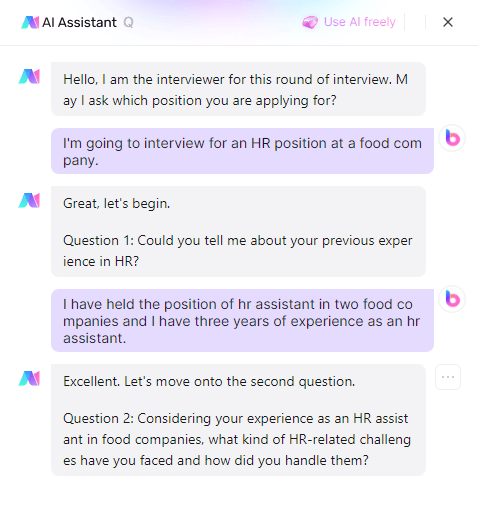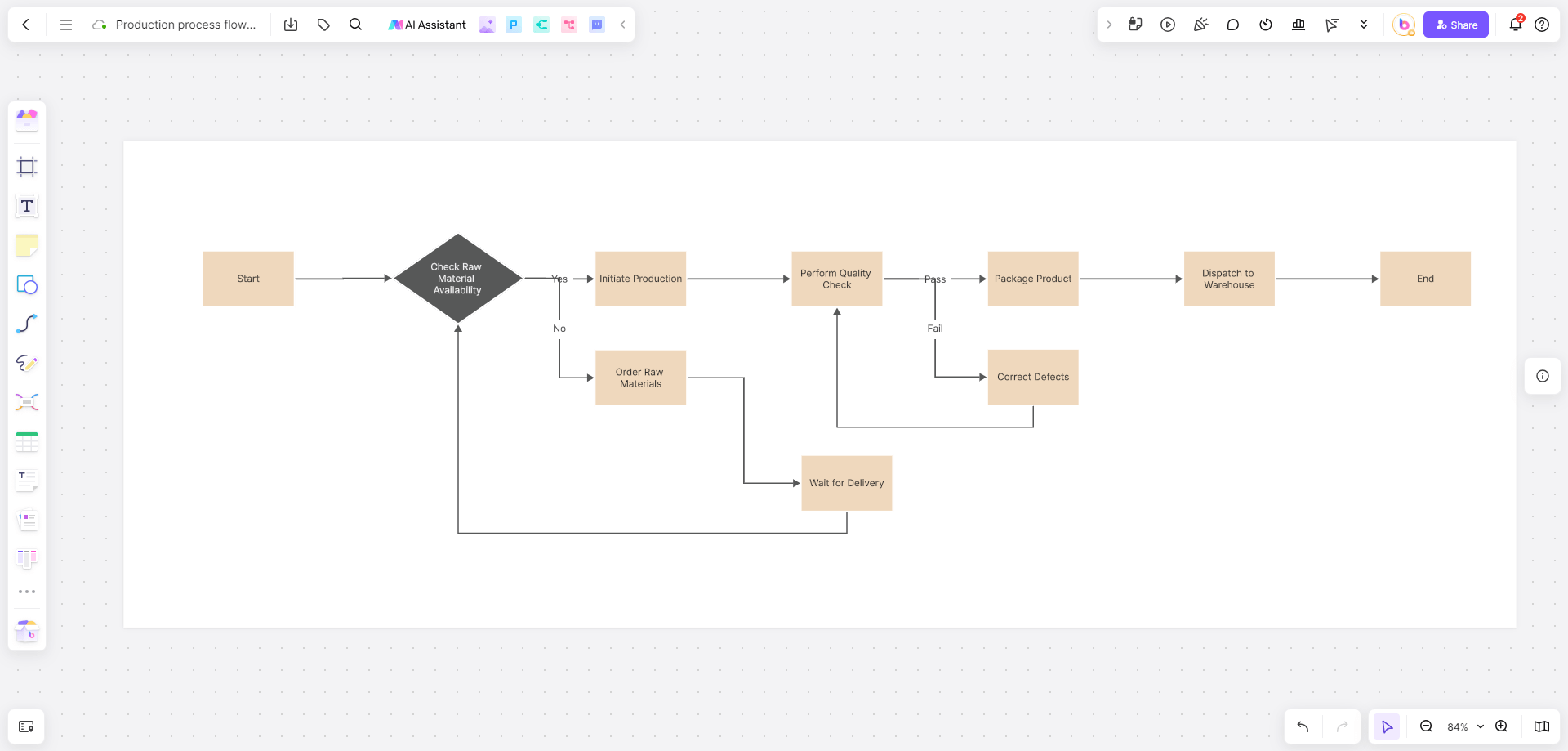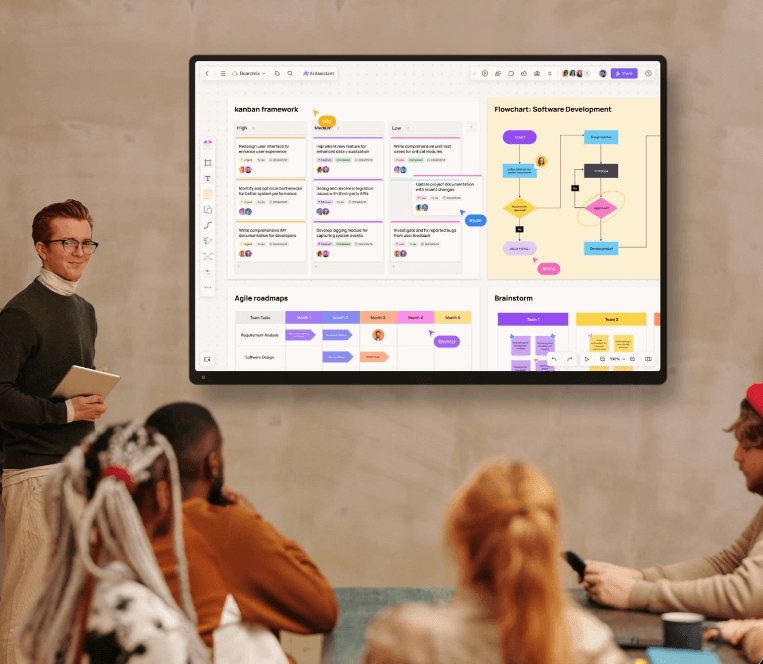Cross-departmental collaboration is now essential for modern businesses, which drives efficiency and strengthens competitive advantage. But in real-world settings, collaboration is often difficult: Teams operate in silos. Communication breaks down. Projects stall. To solve these challenges, many organizations are adopting specialized tools. These tools help streamline teamwork and improve execution.
This article explores how Boardmix supports better cross-departmental collaboration. We’ll show how it improves workflows, boosts alignment, and helps teams work smarter—together.
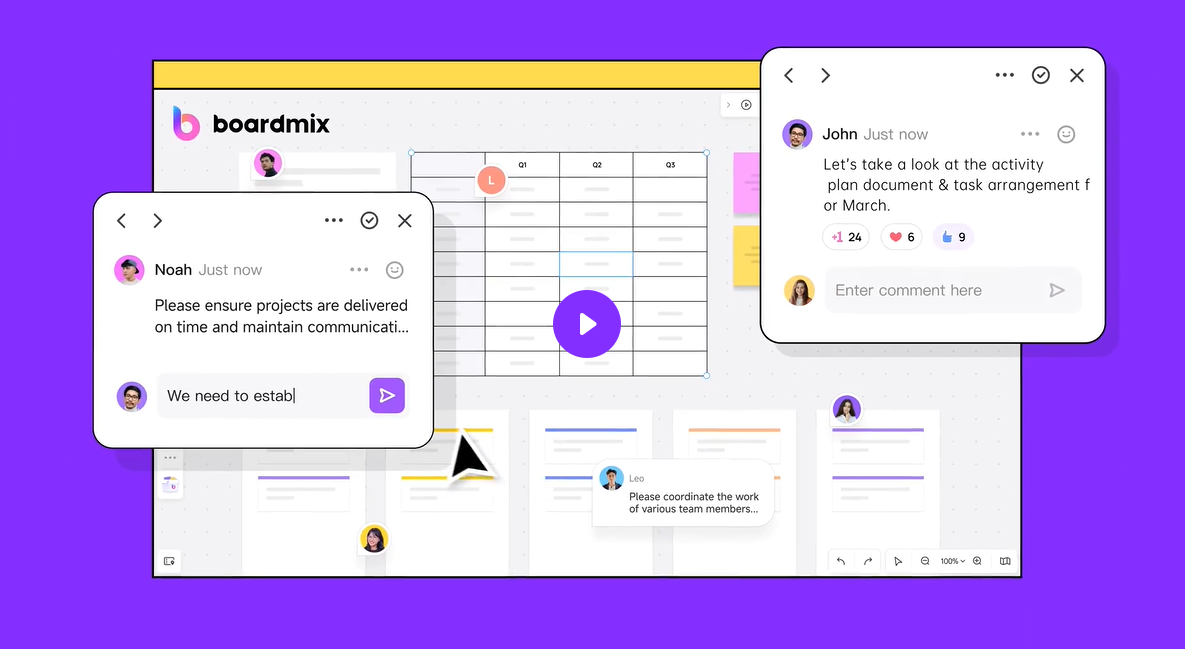
Why is it Difficult to Improve Cross-Departmental Collaboration Efficiency?
In traditional office processes, cross-departmental communication often faces multiple challenges:
1. Severe information barriers: Departments use different tools and lack data sharing, hindering the flow of important information.
2. High communication costs: The lack of a unified collaboration platform means information is largely communicated verbally via email and meetings, resulting in long feedback cycles.
3. Unclear responsibilities: The division of responsibilities in cross-departmental tasks is unclear, leading to buck-passing and hindering execution efficiency.
4. Difficulty synchronizing progress: Projects are progressed independently, lacking real-time progress tracking mechanisms.
Boardmix is designed to address these pain points. Through visual collaboration and intelligent features, it effectively breaks down the perceived barriers to cross-departmental communication and collaboration.
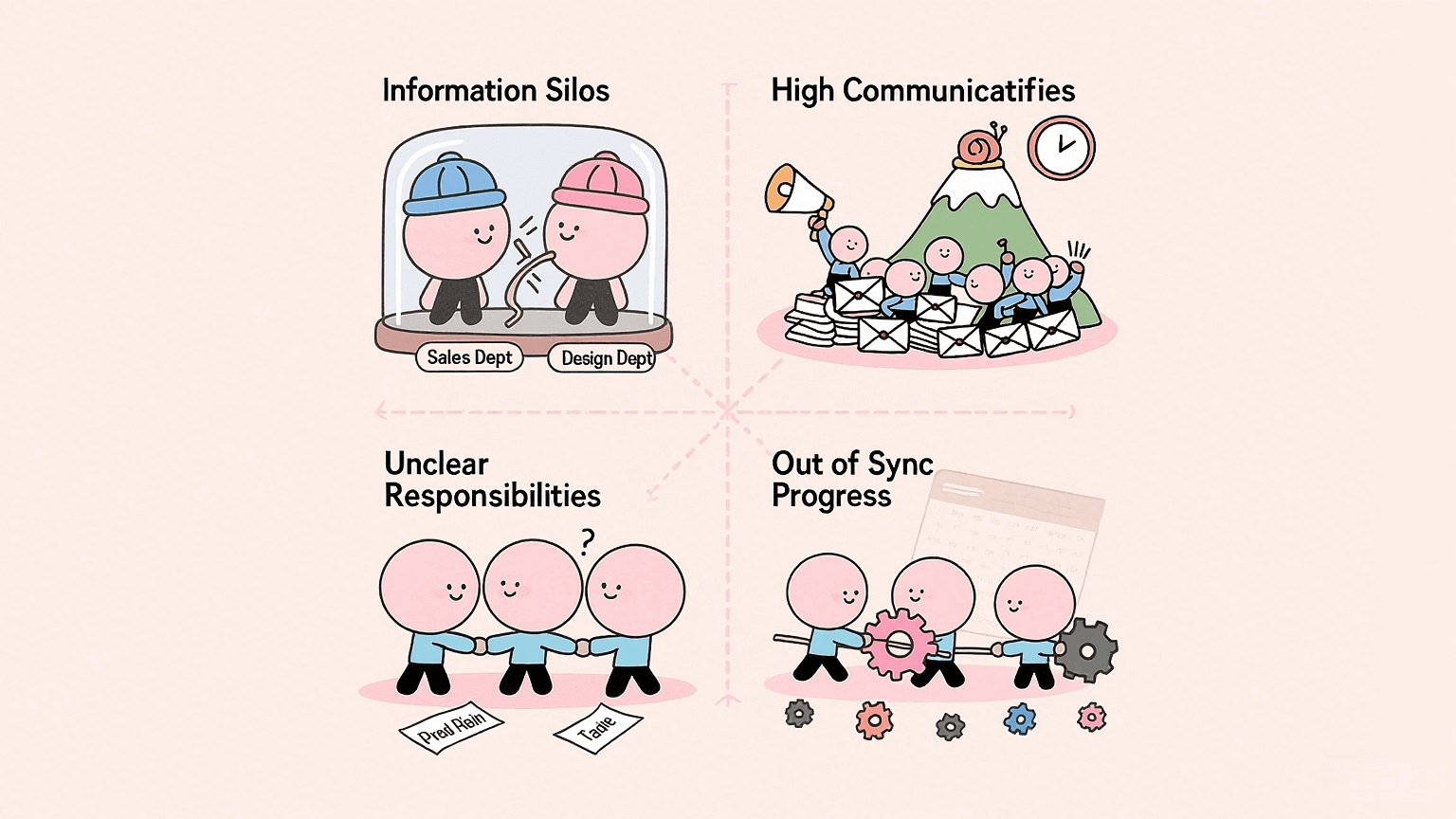
Why Choose Boardmix for Cross-Departmental Collaboration?
1. Visual communication, clearer information expression:
Boardmix has built-in multiple visualization tools, such as mind maps, flowcharts, Kanban boards, Gantt charts, etc. These tools help team members from different departments express complex ideas and business logic in a graphical way. Through these visualization methods, the cost of understanding between departments is significantly reduced, and the efficiency of collaboration is naturally improved.
2. Real-time online collaboration, breaking the barriers of time and space:
Boardmix gives you a shared whiteboard where multiple people can jump in to edit or comment live. That means even if your team’s spread across different offices (or time zones), everyone’s working off the same page—at the same time.
✅ Live notes and input: Cross-departmental teams can chat, tweak ideas, or leave quick thoughts right on the board. No more waiting for emails—opinions align fast.
✅ Remote meetings that stick: Fire up the presentation mode to talk through ideas while showing them off. Different departments stay in the loop on project updates and key details, no confusion.
✅ Works on whatever you’re using: Whether it’s a laptop, iPad, or phone, all the content updates instantly. Physical distance? It doesn’t stand a chance.
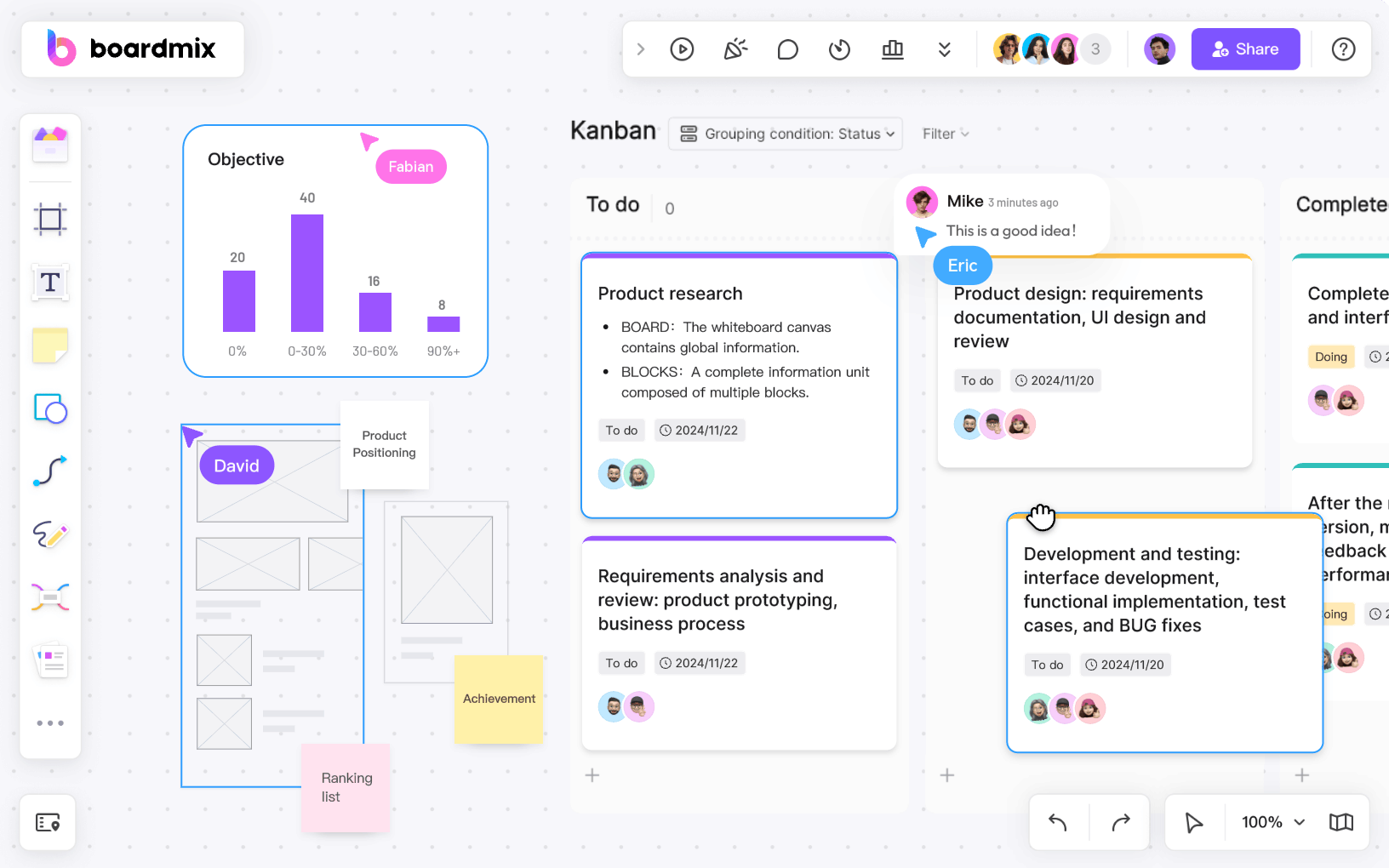
3. AI assistant empowerment reduces communication and creation barriers:
Boardmix has a built-in AI assistant that provides intelligent support in multiple key collaboration links, greatly improving work efficiency:
✅ AI generate mind maps, flow charts, brainstorming lists and other content to reduce the team's initial communication costs.
✅ Quickly expand content logic based on keywords to help members of different departments establish a unified business understanding.
✅ Provide AI drawing functions so that non-designers can easily create professional-level content.
4. Break down information silos and achieve transparent cross-departmental information sharing:
Boardmix effectively achieves transparent information sharing through a unified collaboration platform combined with a permission management mechanism:
✅ Hierarchical permission settings: Support setting operation permissions for different roles (such as viewers, editors, and administrators) to ensure information security.
✅ Traceable operation records: Each modification is marked with the time and user, making it easy to review the collaboration process.
✅ Visual records of meeting discussions: Conduct interactive online meetings with your team and the meeting content is saved as reusable whiteboard assets for easy review and subsequent collaboration.
How to Use Boardmix for Cross-Departmental Collaboration?
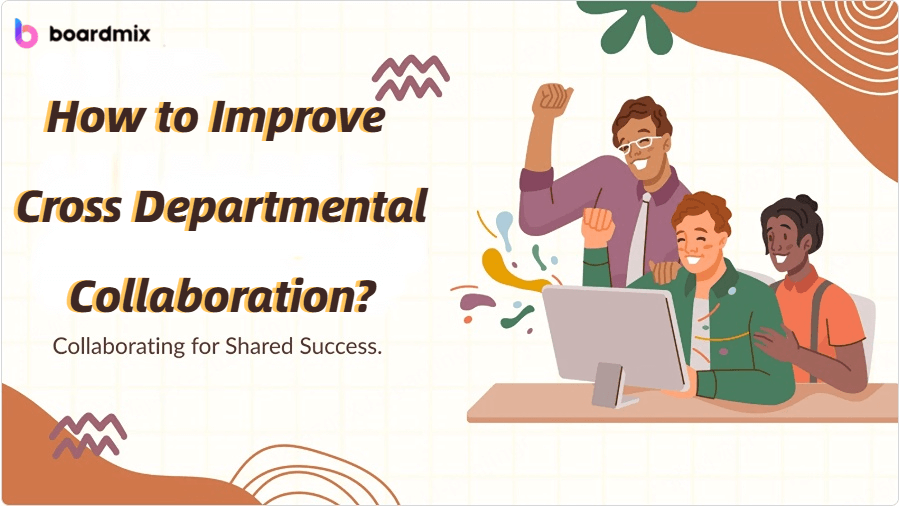
In cross-departmental collaboration, messy workflows and delayed communication often drag down execution. With Boardmix, you can systematically enhance collaboration efficiency through these approaches—drawing on practical cross departmental collaboration examples to streamline processes:
🚩 Step 1: Create a single cross-department collaboration whiteboard
Boardmix’s online whiteboard acts like a shared hub where every department can pile in their info, tasks, and files—all in one place. Everyone can jump in to view, edit, or update stuff right away, so no more info getting stuck in silos. It makes everything transparent, and that’s how you lay the groundwork for smooth cross-departmental collaboration.
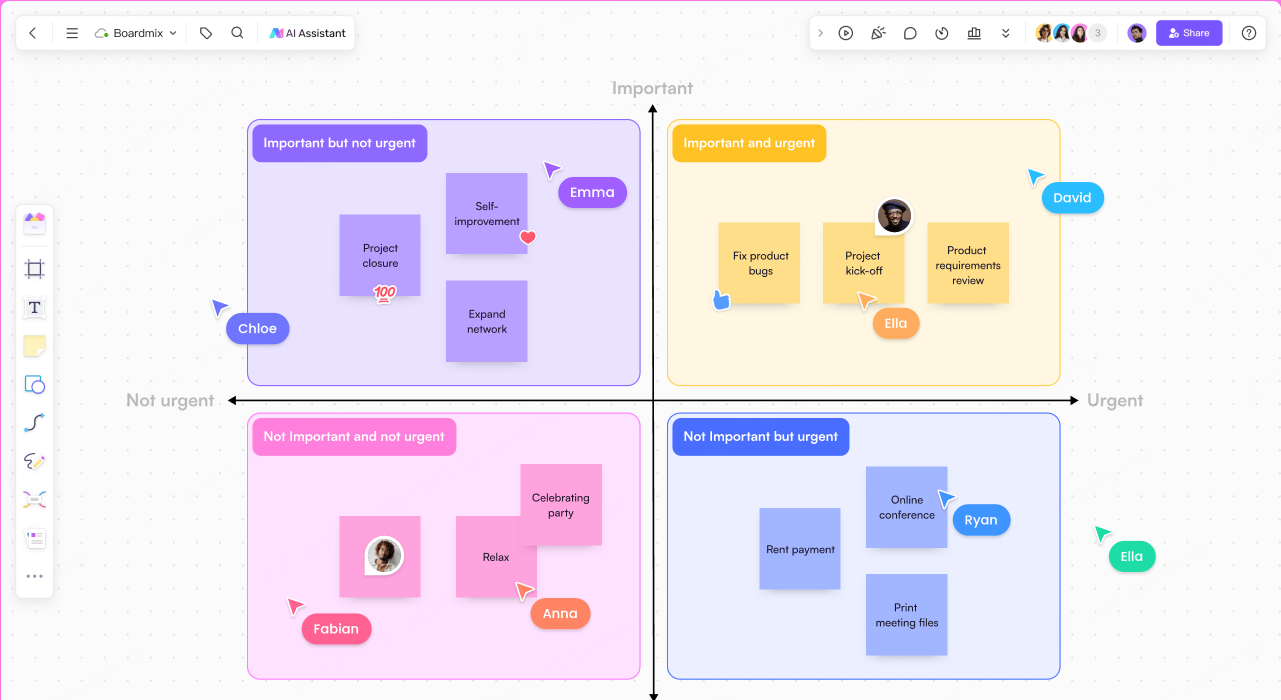
🚩 Step 2: Lay out clear project steps and who does what
Use Boardmix’s flowchart tools to map out project steps nice and clear. For each part, say who’s in charge and when it’s due—no guesswork. This way, teams from different departments know exactly what they’re supposed to do. No more pointing fingers or doing the same work twice—that’s how the best cross departmental collaboration examples get results.
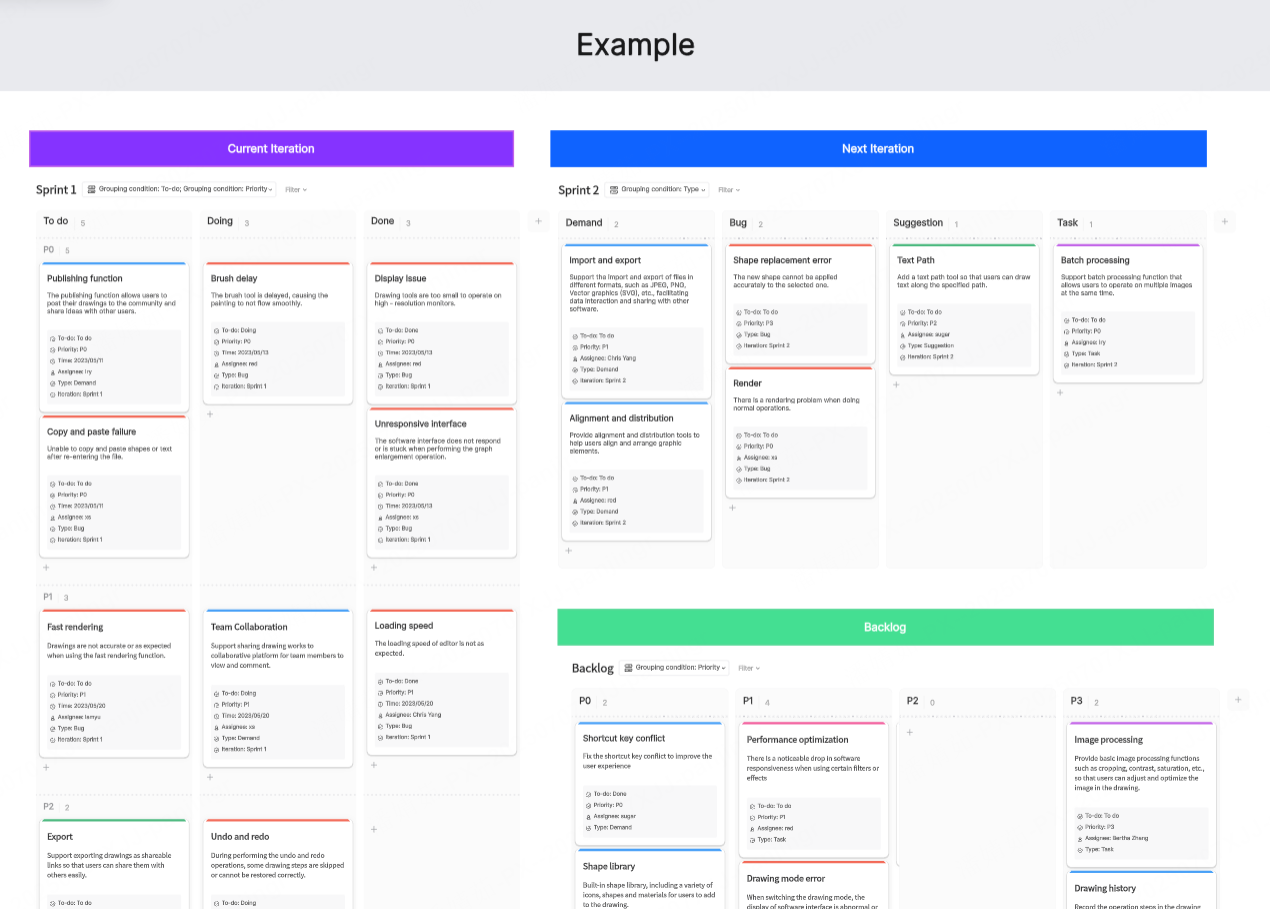
🚩 Step 3: Sort out how you’ll work together with visual tools
Mind maps, flowcharts, kanban boards—use these in Boardmix to untangle how your cross-departmental collaboration should work. They help the team figure out what needs to get done first, align on how things will flow, and keep the whole process running like a well-oiled machine.
🚩 Step 4: Get feedback faster with notes and marks
Boardmix lets teams drop comments or mark up the whiteboard directly. No more endless back-and-forth emails. Departments can share changes and ideas right away, which cuts down on wait times and gets decisions made quicker. It’s a simple trick, but it gives cross-departmental collaboration a big boost.
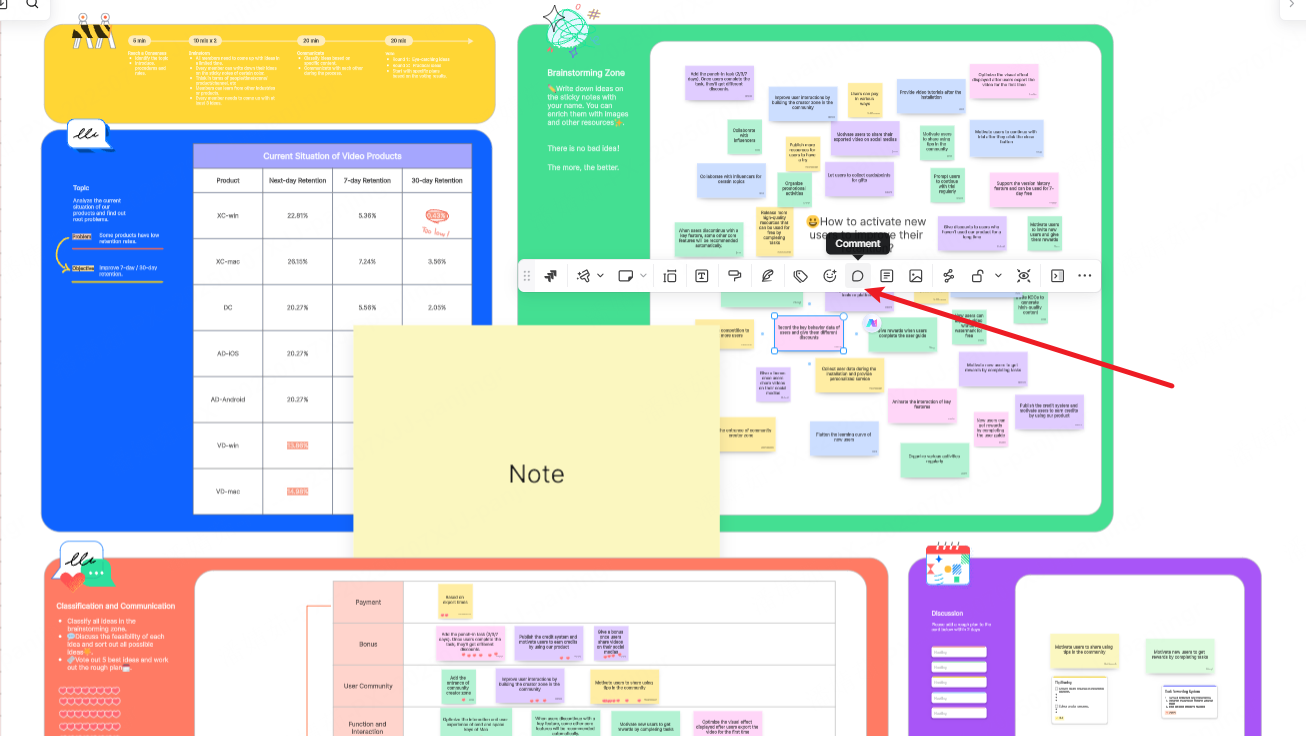
🚩 Step 5: Mark key milestones and track timelines
Put project milestones and important checkpoints on Boardmix. With a shared timeline, every department stays on track. You can see how the cross-departmental collaboration is progressing, keep it manageable, and make sure projects move from planning to finish faster.
🚩 Step 6: Let AI handle meeting notes and action lists automatically
Boardmix’s AI assistant whips up meeting summaries, task charts, and action lists in a flash. This turns every cross-departmental discussion into steps you can actually take—so all that collaboration effort turns into real results.
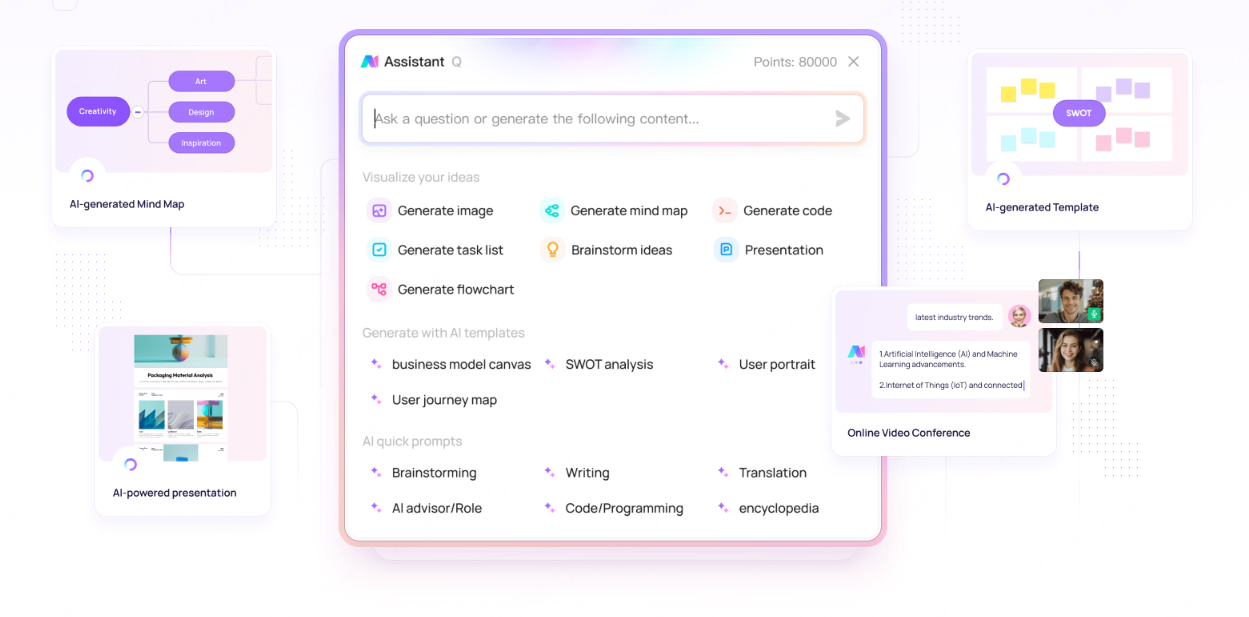
Cross Departmental Collaboration Examples of Boardmix
1. Collaborative Co-creation Between Marketing and Product Teams:
As a classic cross-departmental collaboration case, the marketing team uses the AI assistant to generate user persona diagrams and mind maps for demand insights. Product managers then integrate this market information to organize product function structure diagrams, communicating and adjusting in real time with the marketing team on the whiteboard—achieving seamless cross departmental collaboration. The entire process is fully documented, providing complete data support for subsequent product iterations.
2. Process Optimization Collaboration Between Operations and Technical Teams:
In this cross-departmental collaboration example, the operations team uses flowcharts to map out business processes, while technical personnel mark logical verification and feasibility assessments directly on the same whiteboard. A project kanban helps both sides clarify the person in charge and deadline for each link, and a Gantt chart synchronizes the overall progress—ensuring the project advances in an orderly manner through efficient cross departmental collaboration.
3. Recruitment Collaboration Between HR and Hiring Departments
HR creates a whiteboard for job requirements, allowing department supervisors to confirm or modify details directly on it—streamlining the initial communication phase of cross-departmental collaboration. Interview processes and evaluation criteria are visualized through flowcharts for standardized management, and recruitment data is automatically organized and summarized—accelerating feedback efficiency and talent onboarding speed through this practical cross departmental collaboration example.
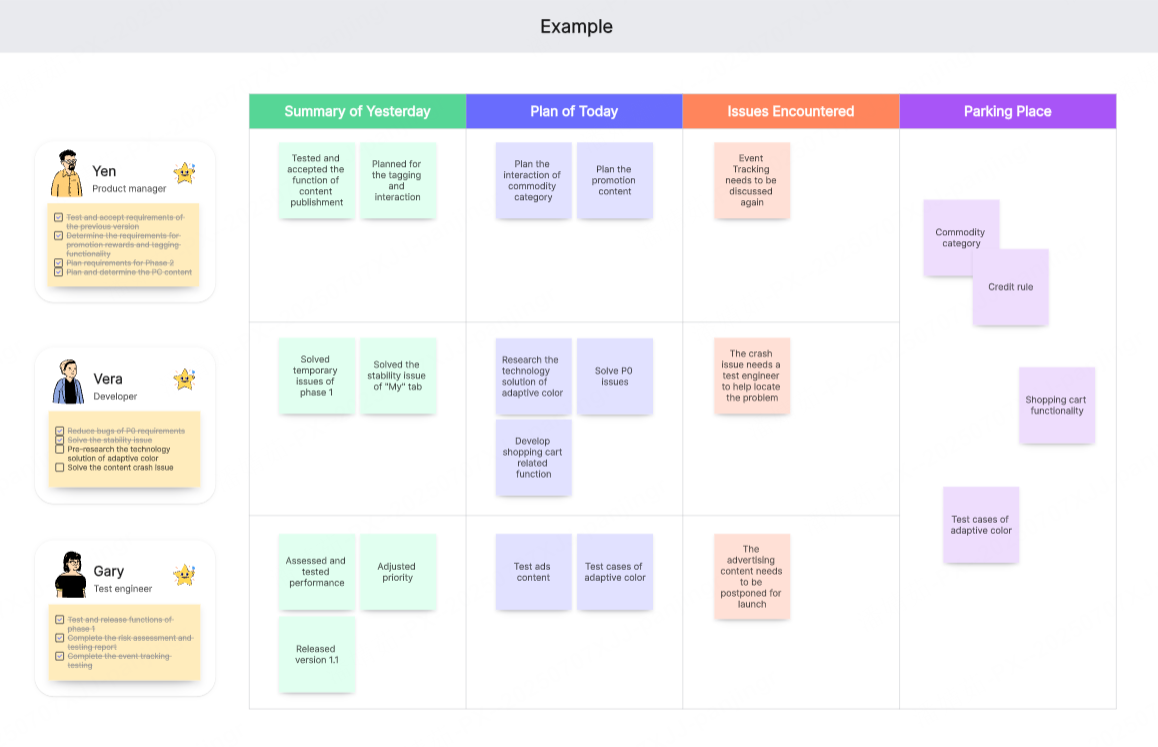
Conclusion
The essence of cross-departmental collaboration lies in the dual test of communication efficiency and execution. Boardmix breaks through collaboration barriers at the tool level, unifying the "language" across departments, making progress visible, and preserving outcomes—truly enabling efficient communication and precise synergy.
From the cross departmental collaboration examples we’ve explored to the everyday challenges your teams face, Boardmix is the bridge that turns potential into performance. Embrace it, and watch your organization build a team with powerful execution, stepping confidently into the new era of intelligent work.
The future of seamless cross-departmental collaboration starts here—with Boardmix. Let’s make it happen.




